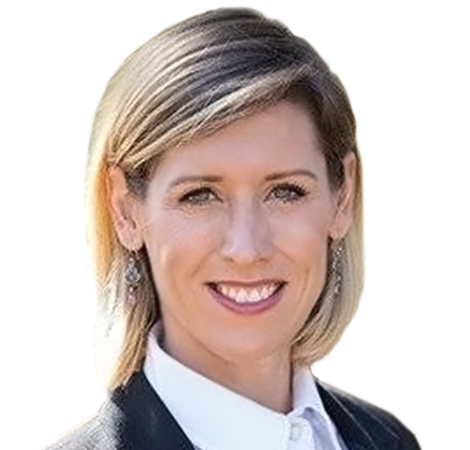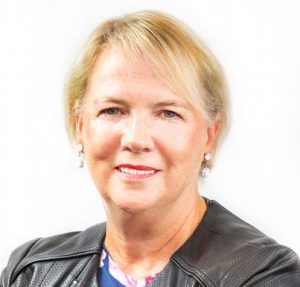DHCRC TELEHEALTH DATATHON | DECEMBER 1 – 8, 2020
Welcome to the DHCRC Telehealth Datathon
In partnership with HMS and RONIN (and with support from Curtin and La Trobe universities), DHCRC proudly presents the 2020 Telehealth Datathon!
Participants may use this guide as resource hub for challenge information, helpful links, and deadlines. If you have questions that aren’t answered on this page, please reach out to the organisers in Microsoft Teams.
Helpful Links
Schedule
Tuesday, December 1
Wednesday, December 2
Thursday, December 3
Friday, December 4
Saturday, December 5
Sunday, December 6
Monday, December 7
Tuesday, December 8
Challenges
Below, you will find the analytical, data science and reporting challenges that teams participating in the Digital Health CRC Datathon are asked to solve.
For the validation challenges, teams must produce a report. For all other challenges, teams should submit a recorded video presentation for judging that is up to 15 minutes in length and summarises key processes and findings.
Video files should be saved in MP4 format and uploaded to the relevant folder in Microsoft Teams. Outputs or written reports that support the presentation should also be filed so they can be accessed by the judges where necessary
Validation Challenges
These are mandatory challenges that each team must answer to demonstrate understanding of the data and utilisation of toolsets.
Prospective Challenge
Challenge that each team answers to show creativity and innovation in tackling a prospective, predictive modelling exercise in healthcare.
Retrospective Challenge
Challenge that each team answers to demonstrate creativity and innovation in tackling an observational health analysis.
Commendation Challenge
Optional challenge for each team to highlight interesting insights, unexpected outcomes and discoveries, or propose future directions that are beyond the scope of the other challenge categories.
View Details
Judging Rubric
All teams must complete the validation challenges. Teams must choose to do the retrospective challenge or prospective challenge, or both. The commendation challenge is an optional extra.
Judges will evaluate each team’s presentation based on their performance in four categories: Analytical Rigour, Visualisation, Storytelling and Business Relevance.
How to Complete Each Challenge
Each team will be expected to utilise the analytics, data science, and visualisation toolkits available via RONIN and work within the high compute budget allowance allocated.
There will be support available for all teams regarding the data, architecture, and tools. Each team is expected to use their creativity in crafting answers to the challenges. Storytelling and visualisation will be important factors, specifically for the Retrospective and Prospective challenges.
As a real-world proxy, consider that your analyses are to be used by executives to inform strategic decisions. The data will be important, but so is the story behind it!
Validation Challenge
Each team must complete all validation challenges before moving to other challenges.
Teams can provide a solution to the challenges through one or more reports. Teams must consider ease of use for the institution who owns the data when deciding if it is best to combine the solutions into one report or to split them into separate reports.
These validation challenges will be performed on a single calendar year (January 2019-December 2019) for the full data set.
Total unique individuals in the data set:
• Total Females
• Total Males
• Total Paediatric individuals (less than 18 years of age)
• Total Adult individuals (18 years of age and older)
Total unique claims in the data set :
• Total medical claims in the data set
• Total pharmacy claims in the data set
• Total telehealth claims in the data set
Prevalence of the following behavioural health conditions in the data set:
• Alcoholism, Alcohol-related Disorders
• Attention Deficit and/or Hyperactivity Disorder
• Bipolar Disorder
• Anxiety and Depression
• Schizophrenia
• …
Total unique telehealth claims for each of the above behavioural health conditions.
Retrospective Challenge
Background:
Historically, telehealth utilisation in the US has been low (single digits percentage-wise). The emergence of Covid-19 rapidly changed that market dynamic, seeing telehealth utilisation peak at over 20% for healthcare activity.
It seems to have currently settled between 10-20%. There also appears to be an abundance of telehealth utilisation related to behavioural health issues.
Business Context:
This problem relates to deferred care and the impact of patients delaying care. It requires an evaluation of the short- and medium-term impacts of care deferral.
Understanding deferral or change in care patterns and the impact by demographic and health status should provide rich information to begin identifying the longer-term implications and allow the development of actionable insights to improve future outcomes.
Problem Statement:
Analyse telehealth utilisation pre- and during Covid-19 and demonstrate the short-term impact on the wellness of those with behavioural health issues (18 months data total; January 2019-June 2020).
Potential questions to be considered:
- What were the usage rates of telehealth prior to Covid-19 (2019) and at the onset (January-June 2020)?
- What is telehealth primarily used for – acute care or ongoing care for prior conditions? Has this changed during the pandemic?
- For people who had these behavioural conditions prior to Covid-19, what happened once the pandemic started? Did they stop their ongoing care? Switch to telehealth? Wait till a crisis and show up in the Emergency Department?
- Once people had an initial telehealth visit, did they become repeat users of this delivery mechanism, or switch back to in-person at a later time?
- Have people who utilised telehealth had worse outcomes than expected?
- Are there some conditions which, based on the data, have proven more suitable to telehealth monitoring than others?
- What are the top concomitant conditions that are presented with behavioural health?
- Do those conditions seem to have a different pattern of telehealth utilisation than behavioural health?
Prospective Challenge
Background:
Historically, telehealth utilisation in the US has been in the low (single digits percentage-wise). The emergence of Covid-19 rapidly changed that market dynamic, seeing telehealth utilisation peak at over 20% at points in time for healthcare activity.
It seems to have currently settled in the high single digit to very low double digits between 10-20%. There also appears to be an abundance of telehealth utilisation related to behavioural health issues.
Business Context:
The aim is to better understand the ramp up of telehealth use.
Developing predictive use cases can provide some insights into where we will see sustained use, where there may be virtual access and infrastructure gaps, and where there is likely to be a shift back to ‘brick and mortar’ face to face care.
Problem Statement:
Predict future telehealth utilisation (post-June 2020) in those with behavioural health conditions (36 months data total; July 2017-June 2020).
Potential questions to be considered:
- What will the usage rates of telehealth be?
- What will telehealth be primarily used for – acute care or ongoing care for prior conditions?
- Are there some conditions – or other demographic factors – which, based on the data, can be predicted to be more suitable to telehealth monitoring than others?
- What are the most likely concomitant conditions to be present in future telehealth when considering both with and without behavioural health considerations?
- Can we predict telehealth rates based on location?
- What are the top 10 predictors of telehealth utilisation?
Commendation Challenge
This challenge is optional and aims to inspire ‘out of the box’ thinking.
- Are there missing fields in the data (e.g. from one or more different data sources) that if provided could help improve the quality or accuracy of the outputs?
- What is the most interesting insight that you have derived from the data that falls outside the scope of the Validation, Retrospective and Prospective challenges?
- Did you find any themes in the data that could be of special interest to the institution who owns it?
- Did you discover unexpected outcomes while exploring or viewing the data?
- Did you have any ‘Aha!’ moments during the datathon that the data owner may be interested in?
Mentors















Judges
Prizes
Retrospective Challenge Winner
$6,000
Cash Prize
($1,000 per Team Member)
Prospective Challenge Winner
$6,000
Cash Prize
($1,000 per Team Member)
Commendation Challenge Winner
$3,000
Cash Prize
($500 per Team Member)
Social Media Challenge Winner
$3,000
Cash Prize
($500 per Winner)
#TelehealthDataChallenge
Social Media Challenge
Six $500 cash prizes will be awarded to individual datathon participants for active and creative involvement in social media throughout the datathon.
Please use the event hashtag #TelehealthDataChallenge across LinkedIn, Facebook, Instagram, and Twitter.
Eligible posts must:
- Not contain or share material that breaches the Data Use Agreement
- Be Publicly Visible on Facebook, LinkedIn, Twitter, or Instagram
- Be tagged with the official DHCRC hashtag #TelehealthDataChallenge































